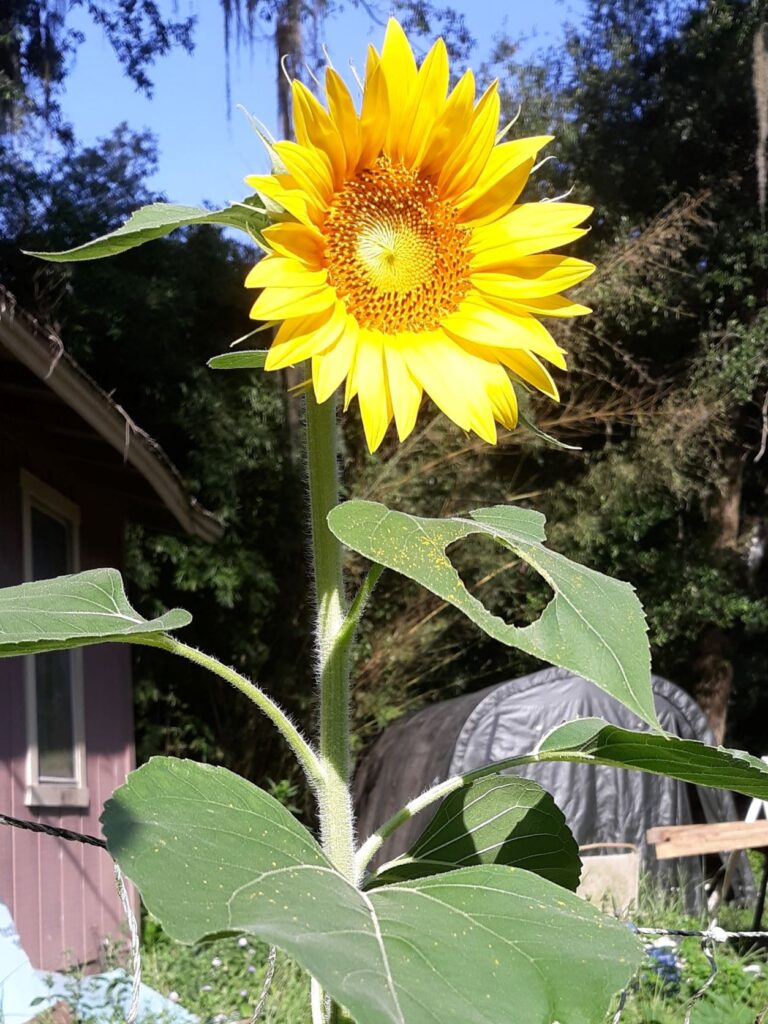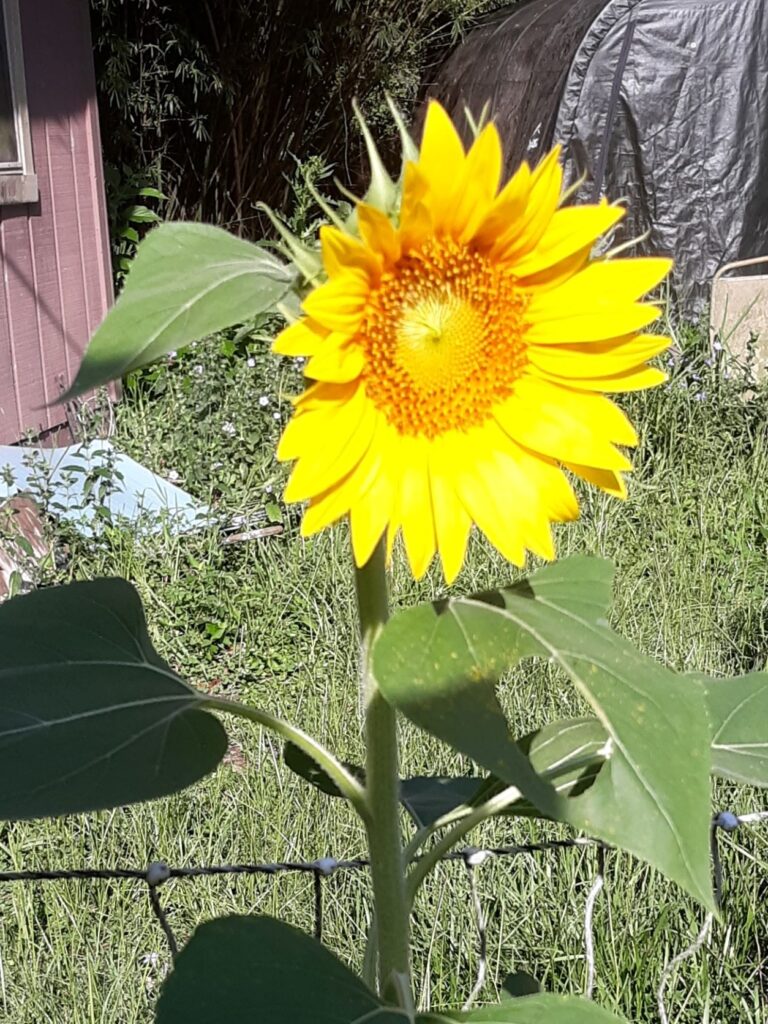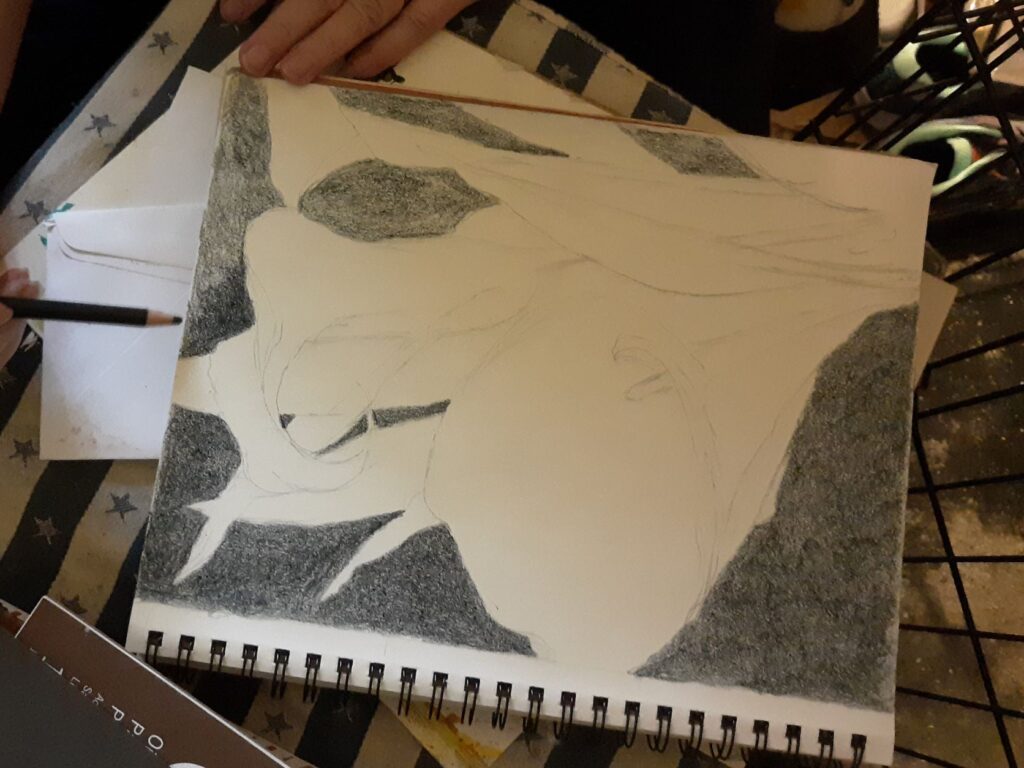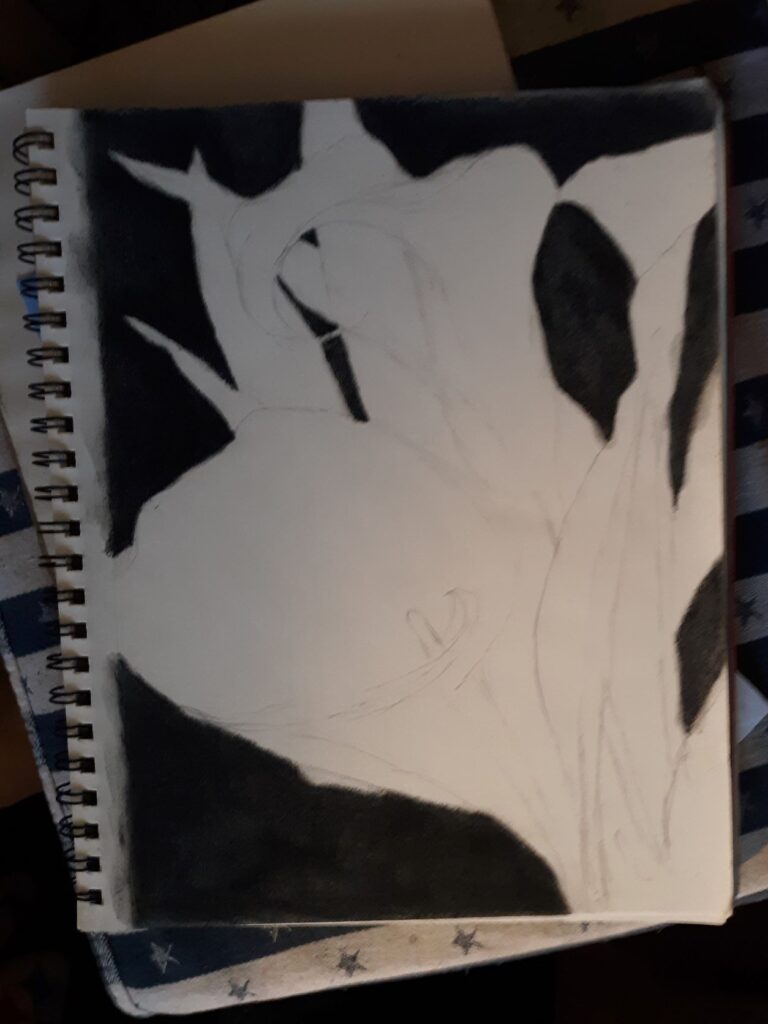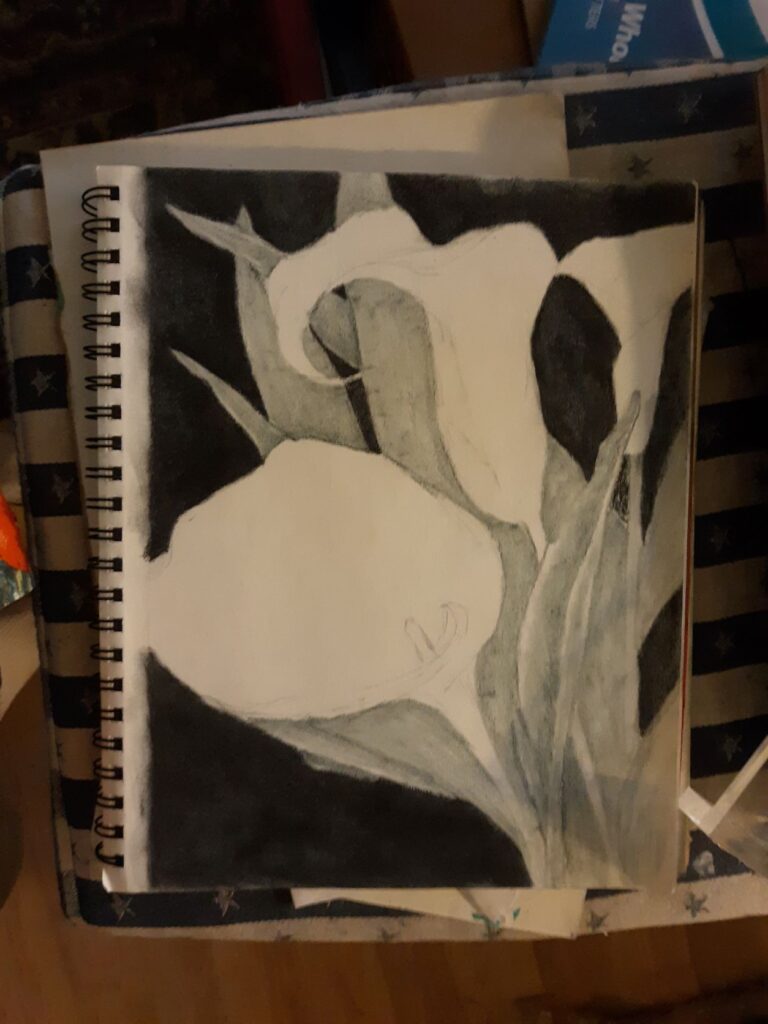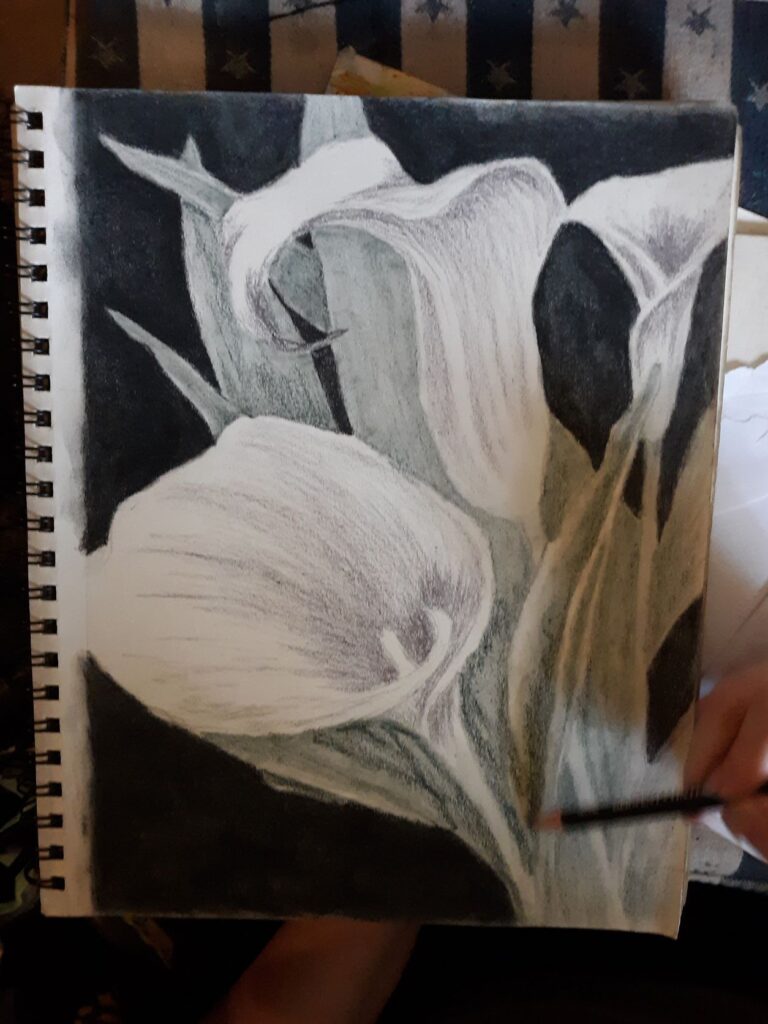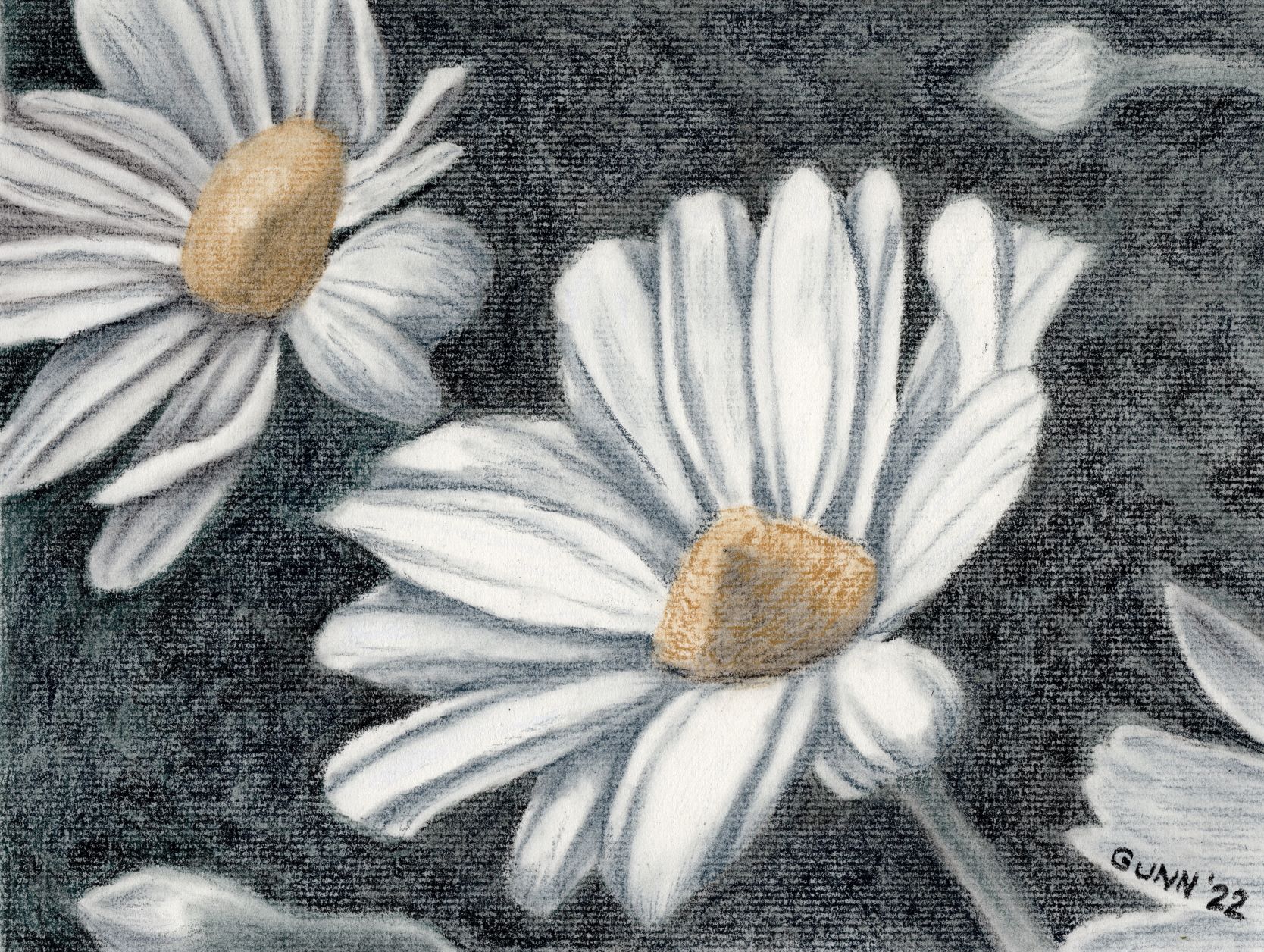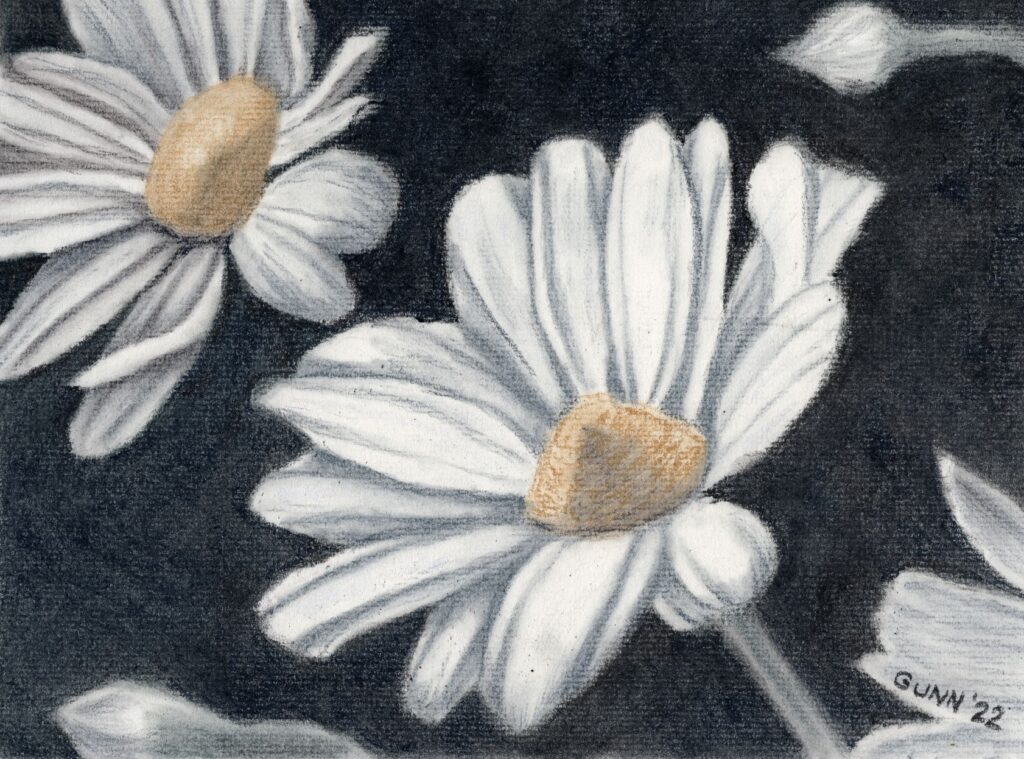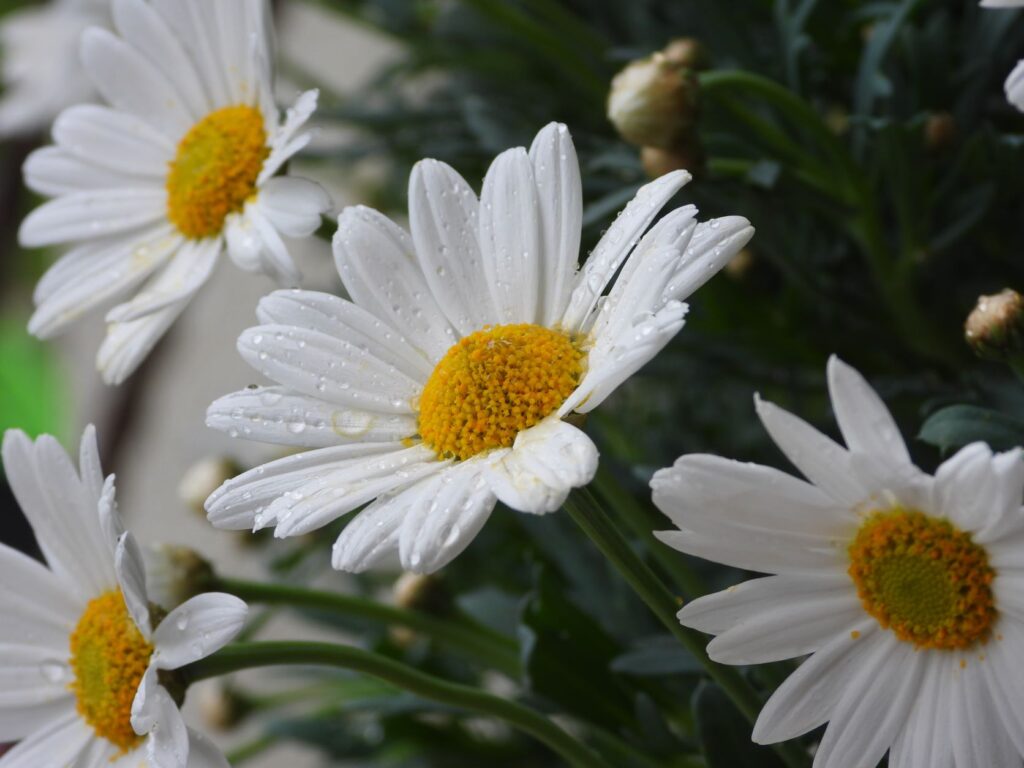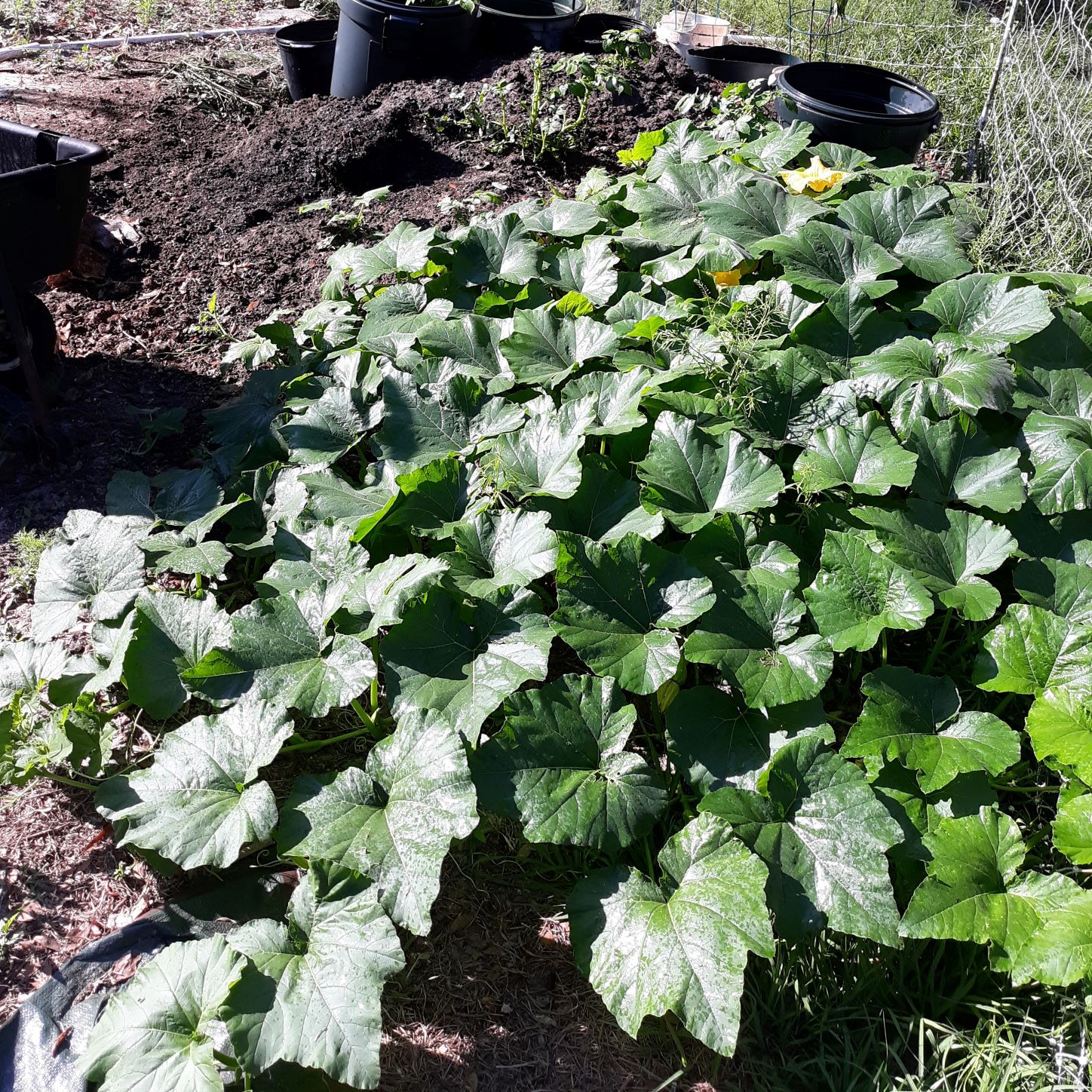Finally returning to the third and last piece I did for the flame challenge, though I was not able to upload it on time. I already showed a preview of it in the early stages, but have had this candle still life in oil pastel done for a while now. May I present Book Reading By Candlelight, as I finally named it. (In all honesty, it took me almost as long to figure out the title as it took to blend the base layer!)
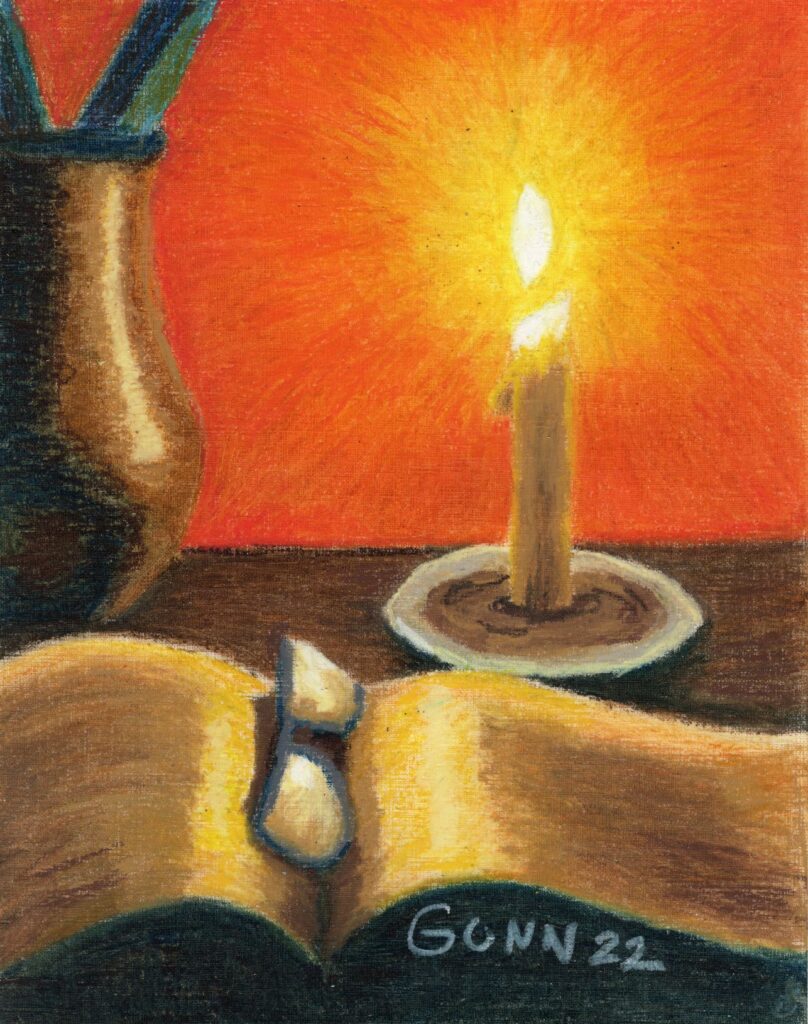
Art supplies used
I used a sheet of Canson XL oil and acrylic primed paper, because I absolutely love the texture on it for oil pastels. I used my Mungyo Gallery standard set for the base layer, because that lovely texture will eat up softer oil pastels. For the record, that textured paper also tears up the cotton swabs I use to blend, so it is a good thing I can get a nice big package for only a few dollars at WalMart. On larger areas, I sometimes use napkins that I keep on my desk from takeout – those also do a great job of cleaning up spills (paint, coffee, etc).

I’m afraid I only have the one in-progress picture, because once I blended the base layer and took a break I put on my headphones and got into the zone, totally forgetting about the digicam as I happily lost myself in the sheer joy of playing with sticks of color. What can I say? I am an artist. This is an artist thing.
For the top layers, I used my Gallery Artist set – only 48 colors, so as I often do I used my Erengi Art Aspirer 50 stick set alongside it since the two manufacturers include different colors in their very comparable and compatible sets. I should note that since then, I purchased the 72 color set from Mungyo in a nice wooden box, and the 92 stick set from Erengi, also in a nice wood box. The Erengi set also includes two colorless blenders … if those work better than cheap cotton swabs I’ll be buying them by the dozen.
Links to purchase original and art prints
Now, for the part y’all have been waiting eagerly for: how to get this for your wall! At present, the original is available (though my friend Keashia says she is very tempted to get this because it will match the decor in her new house) and you can purchase it through Daily Paintworks. For larger (or even smaller) art prints to fit the empty spot over your favorite reading chair, browse the selection at my Pixels store. I uploaded it to my RedBubble shop so you can get it printed on apparel, accessories, and fun swag.
Update: This is now officially an award-winning artwork!

